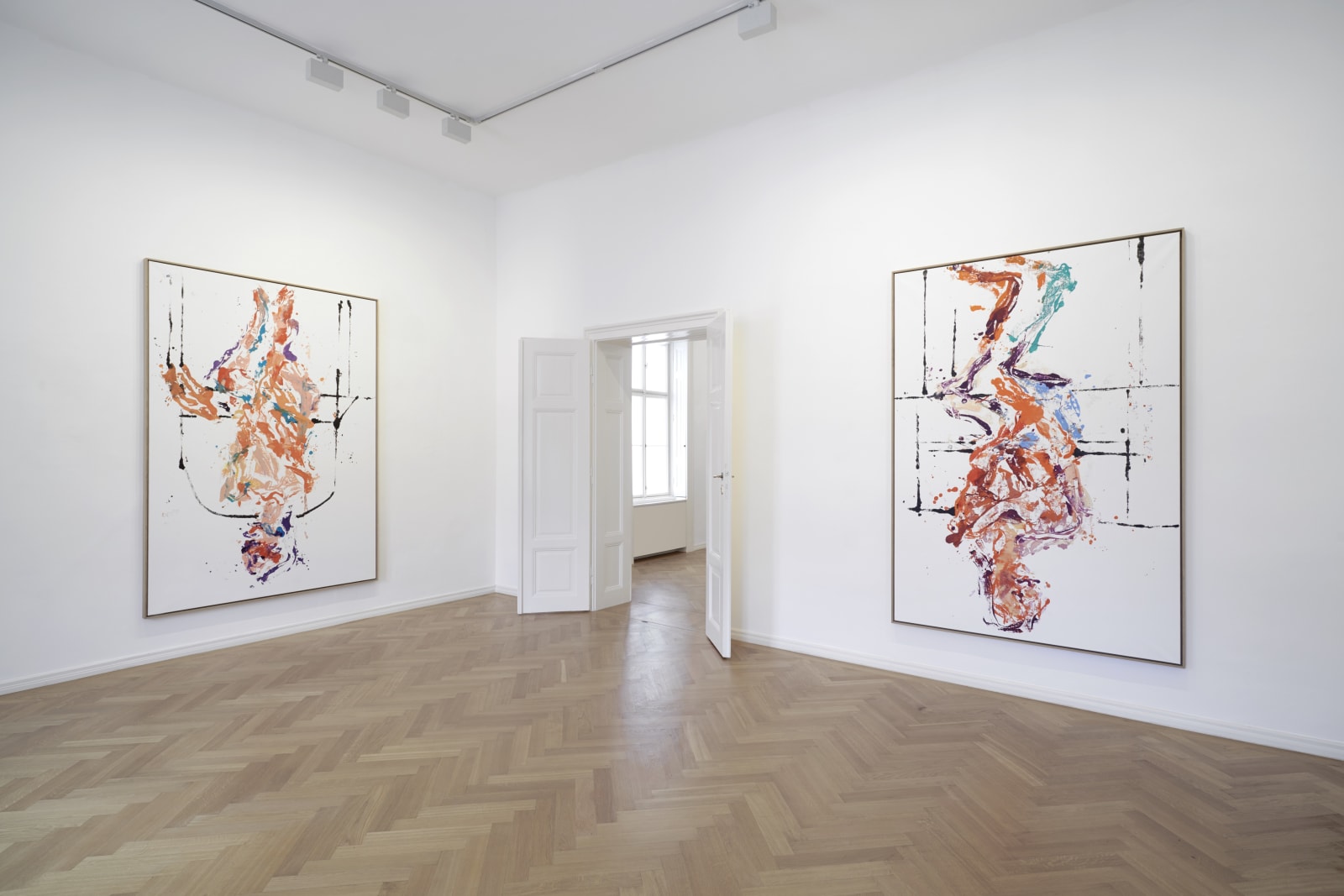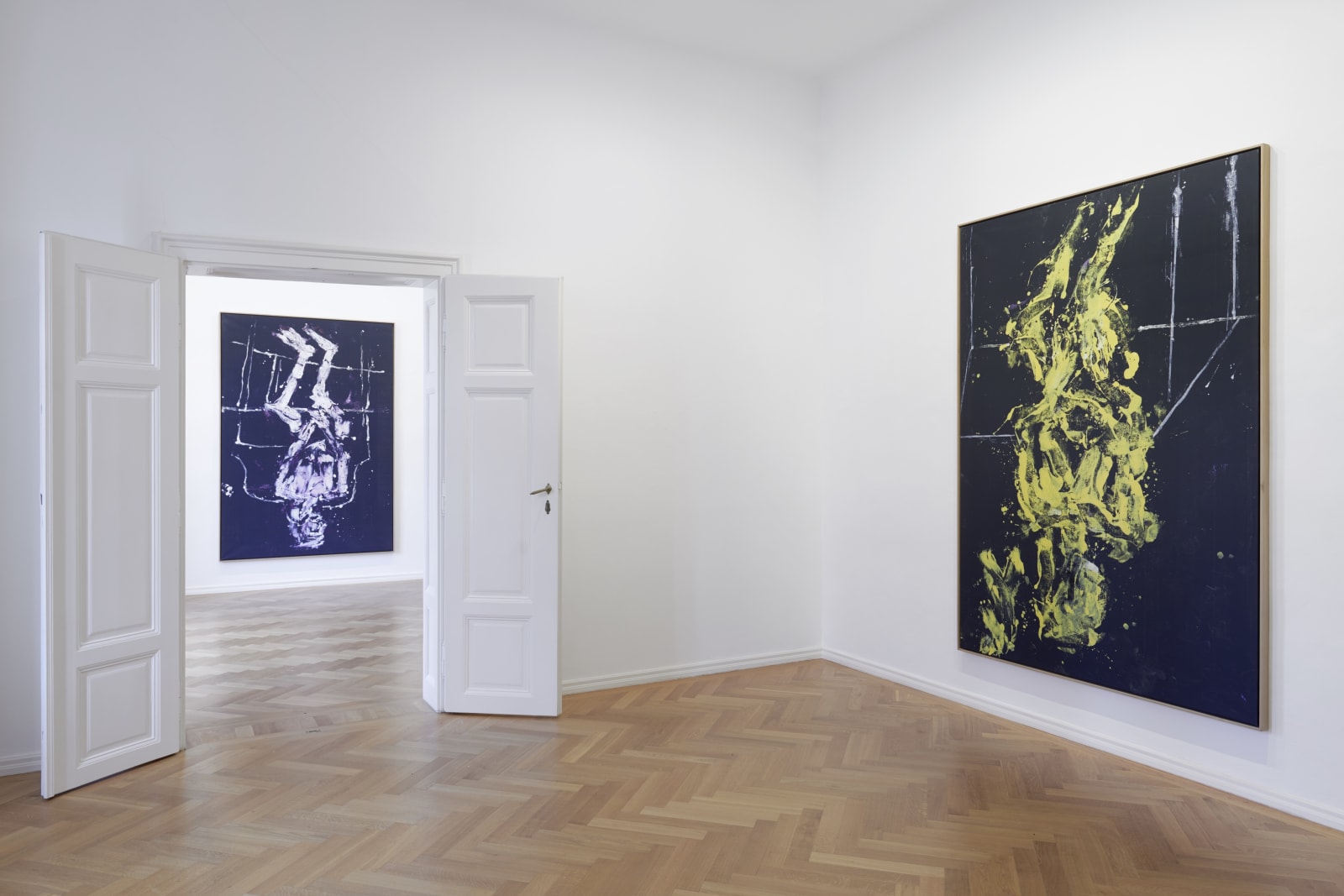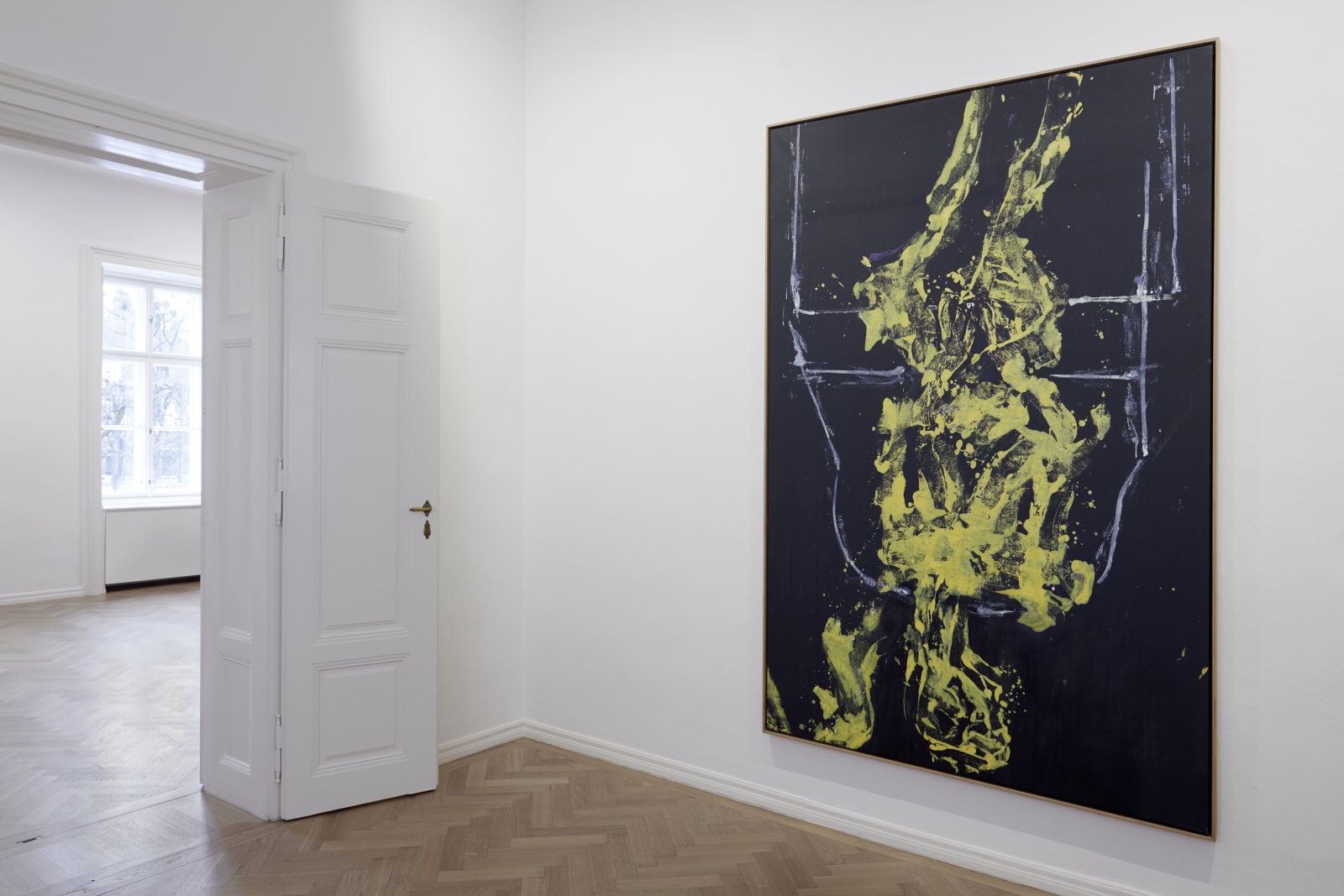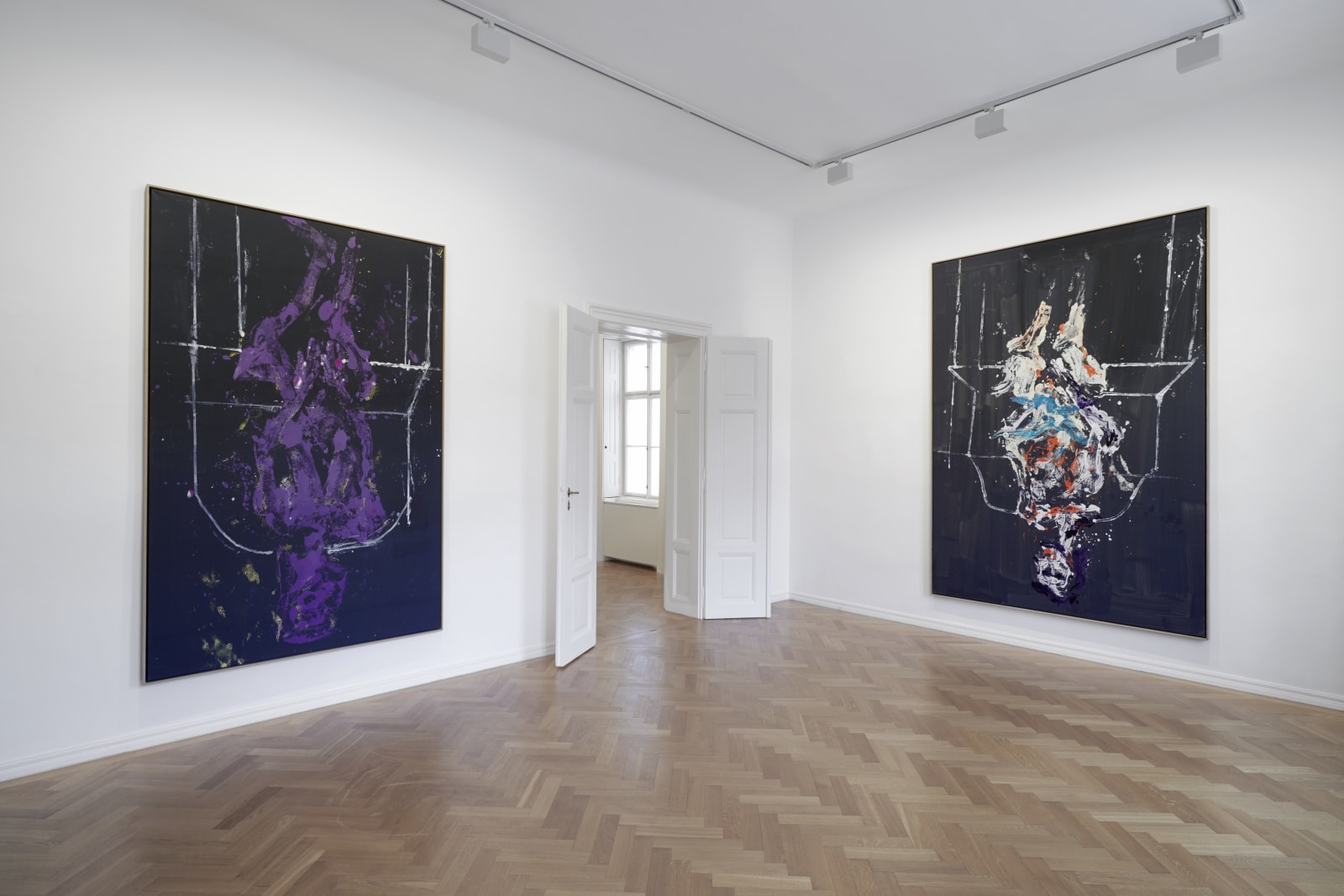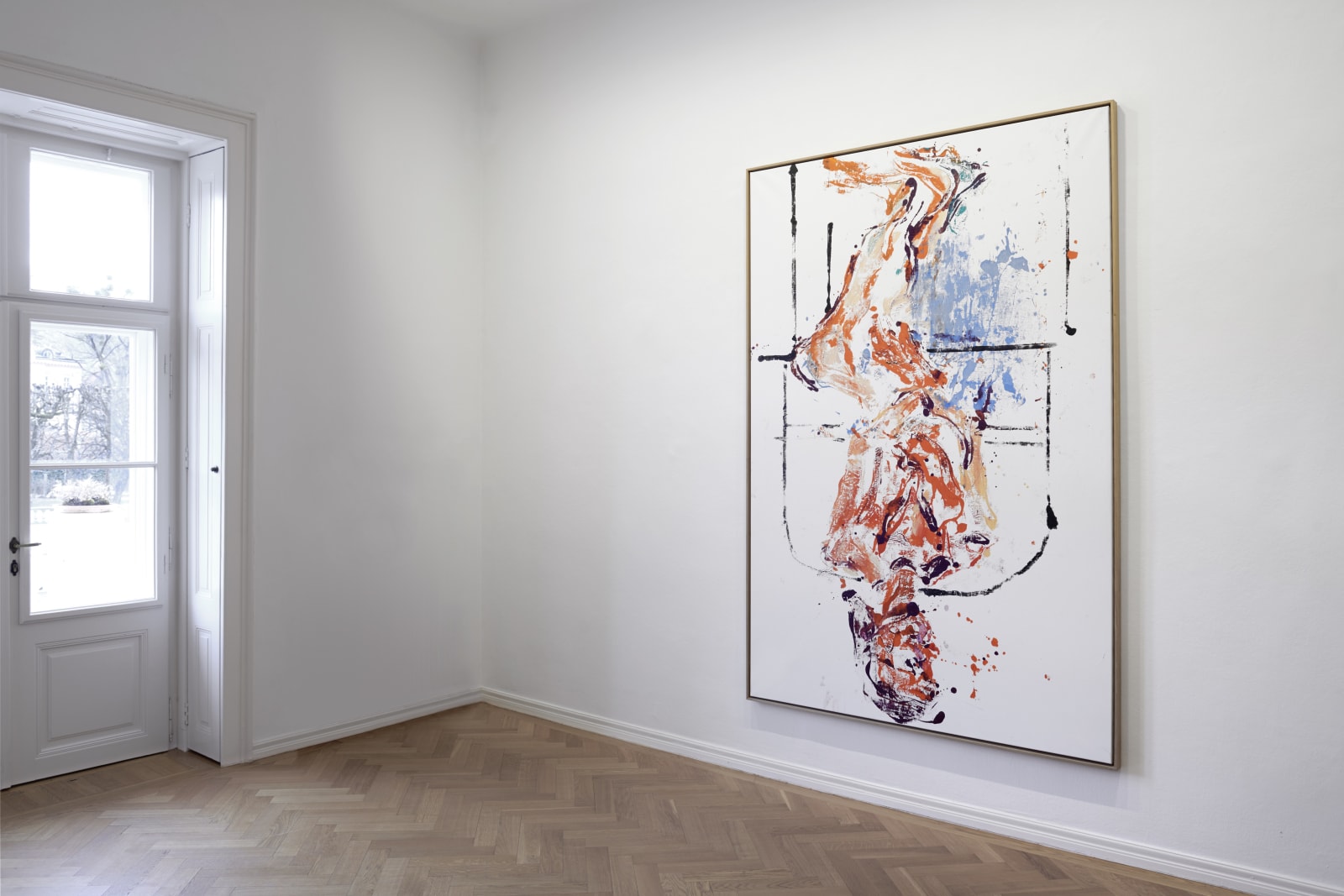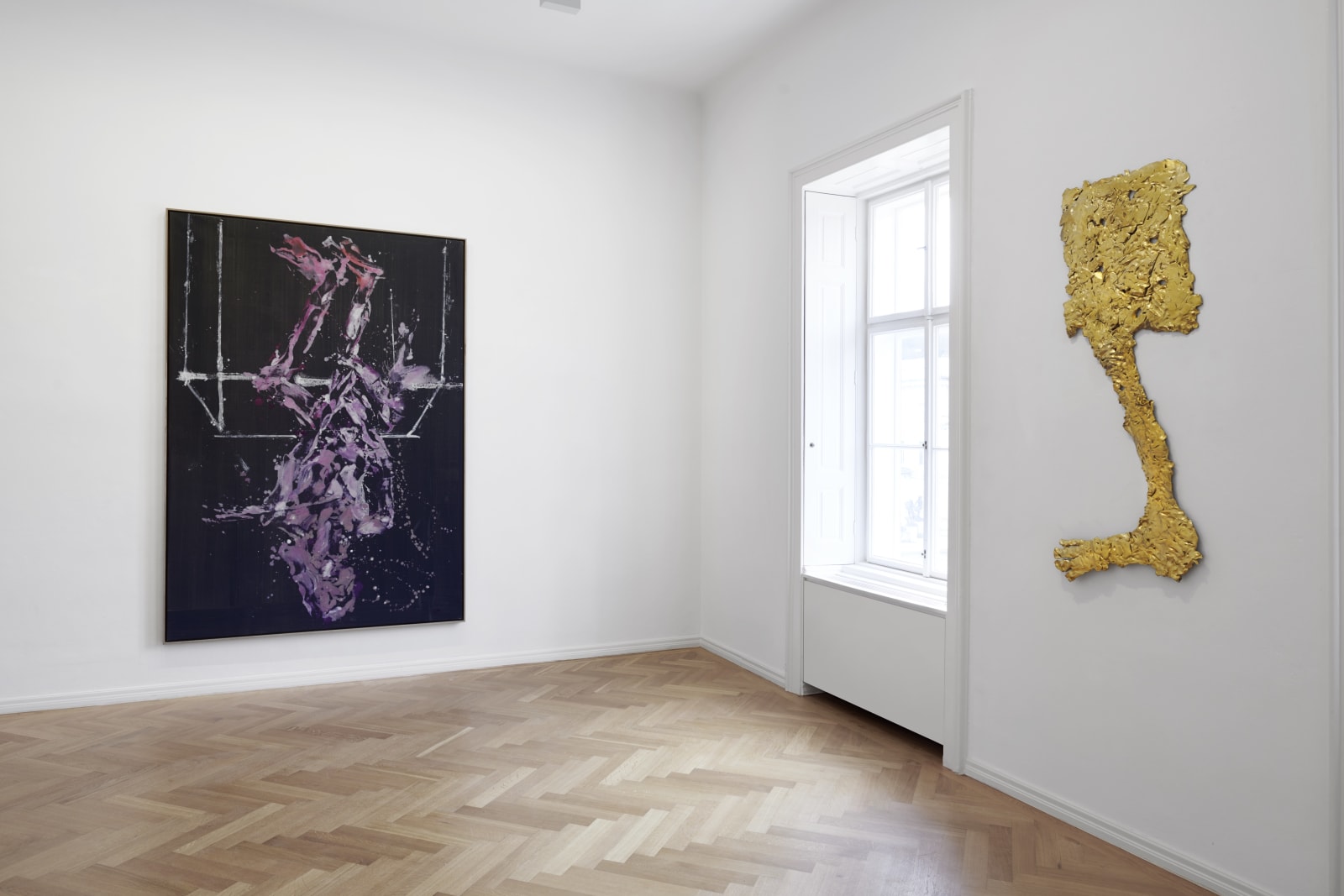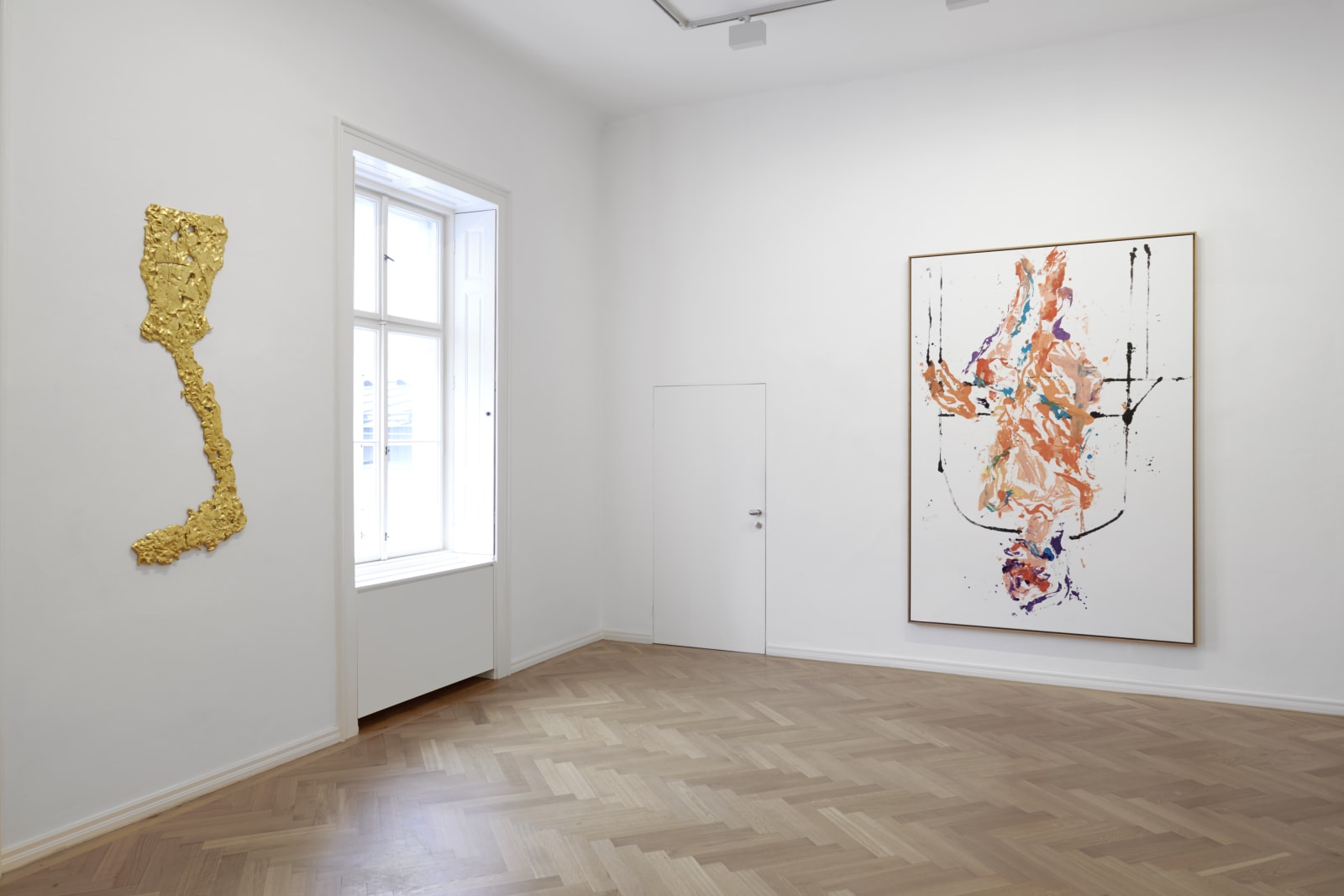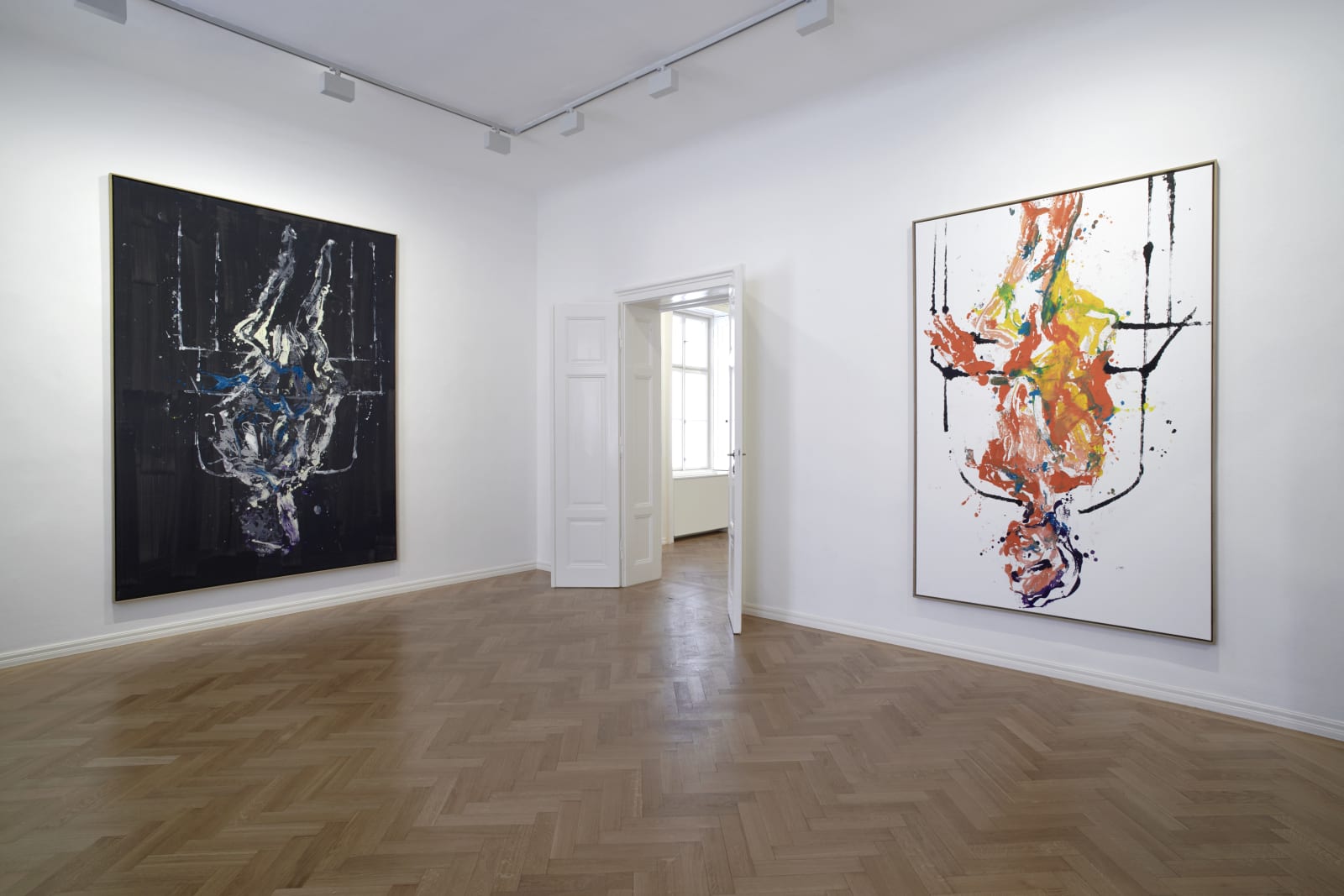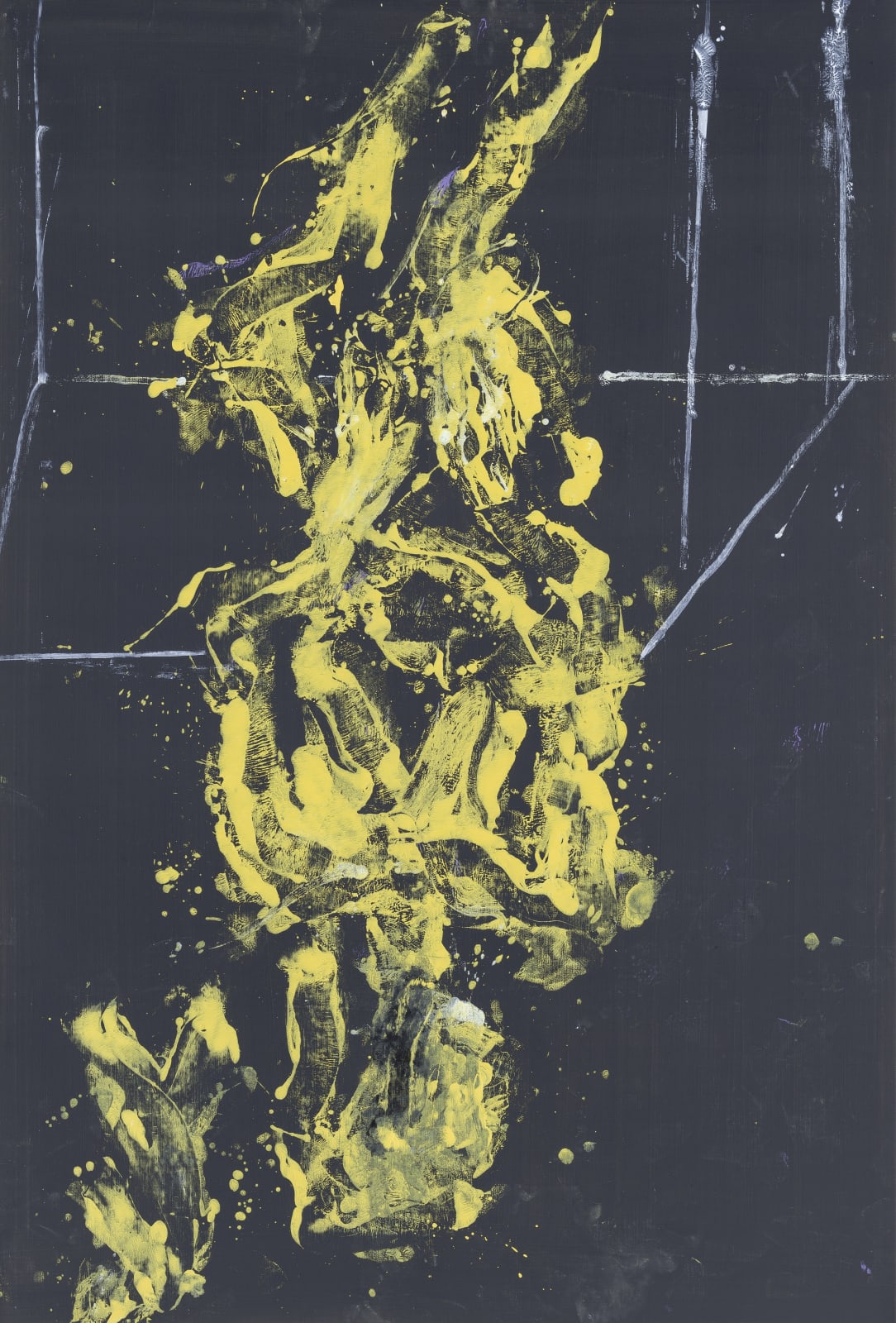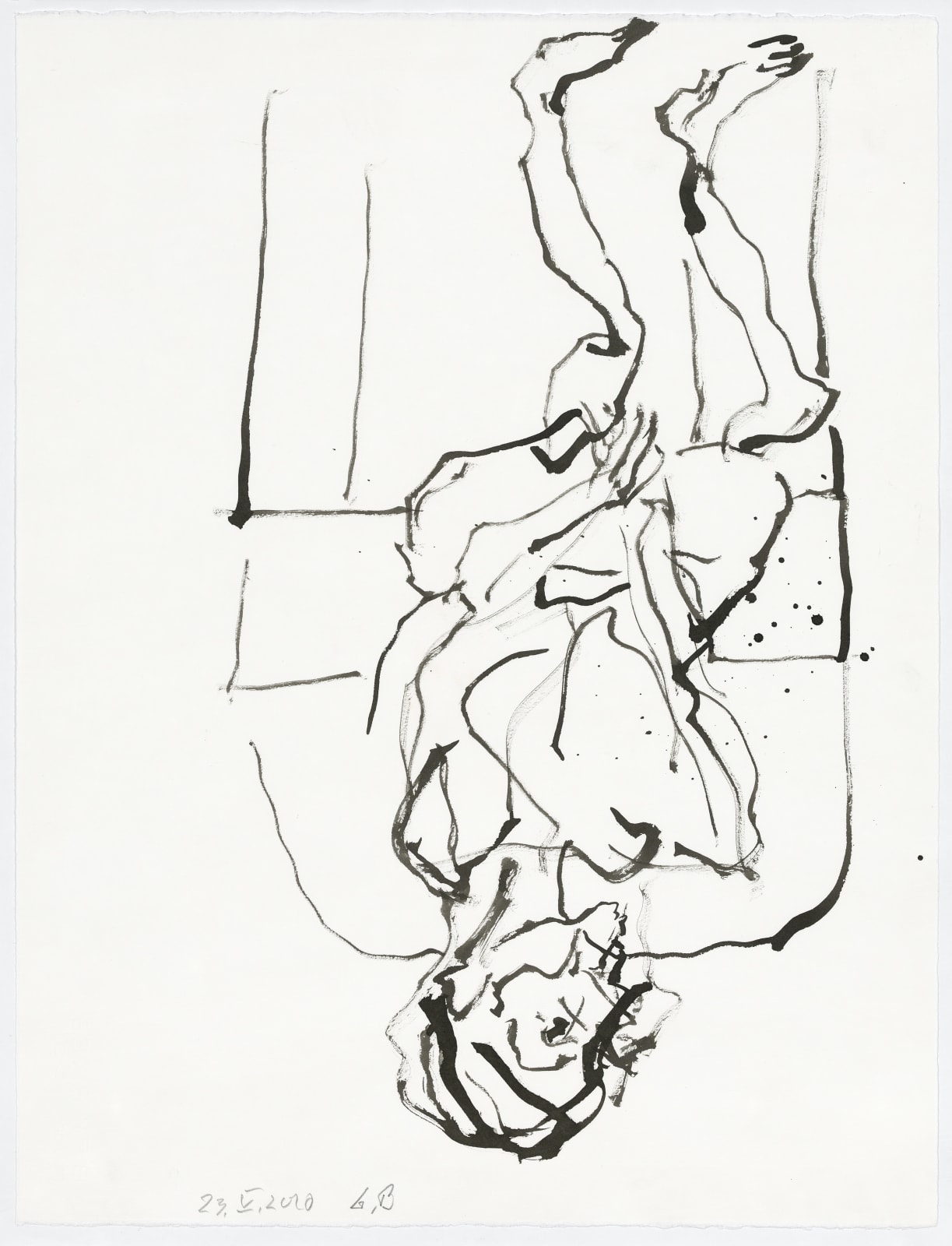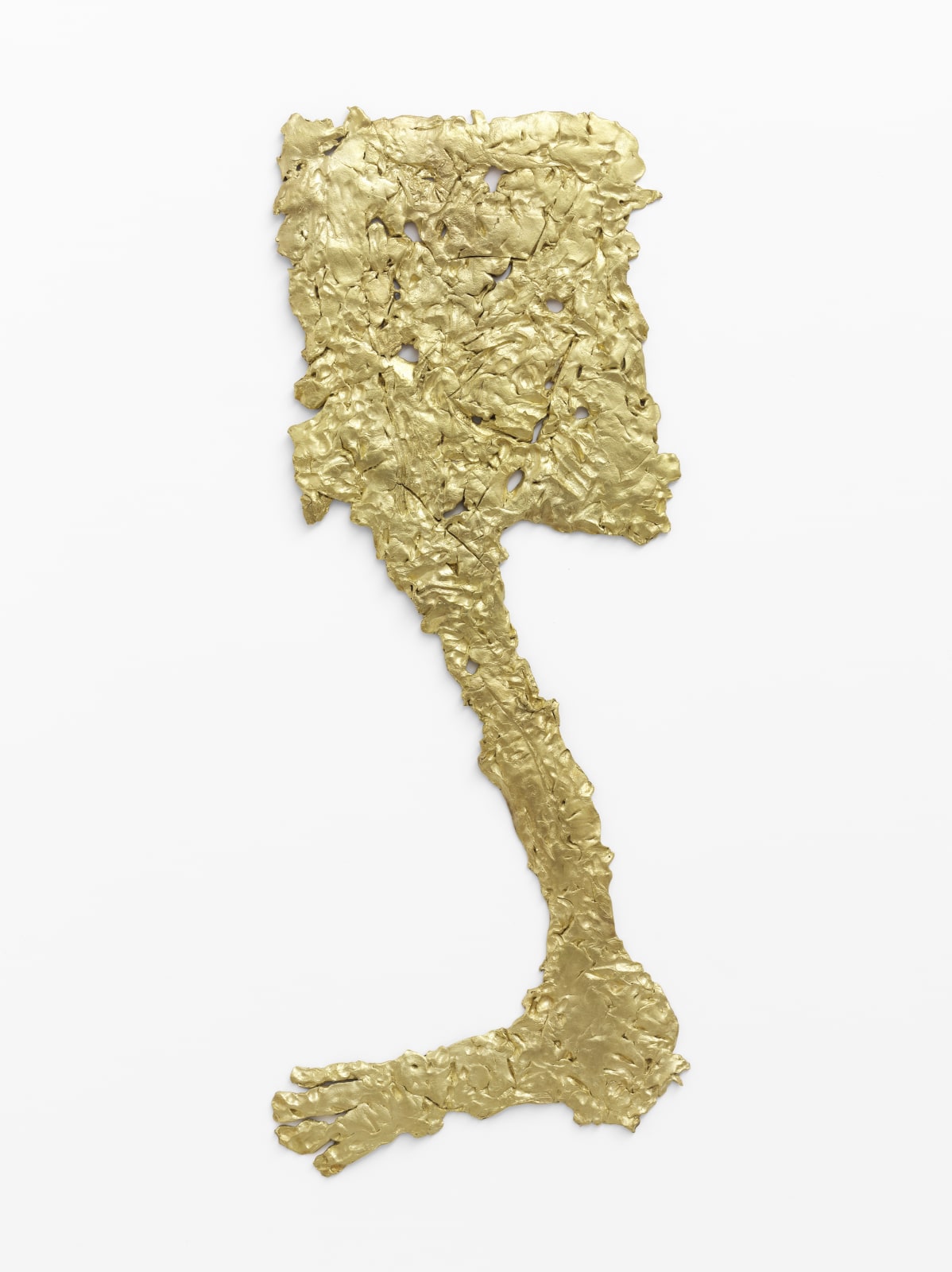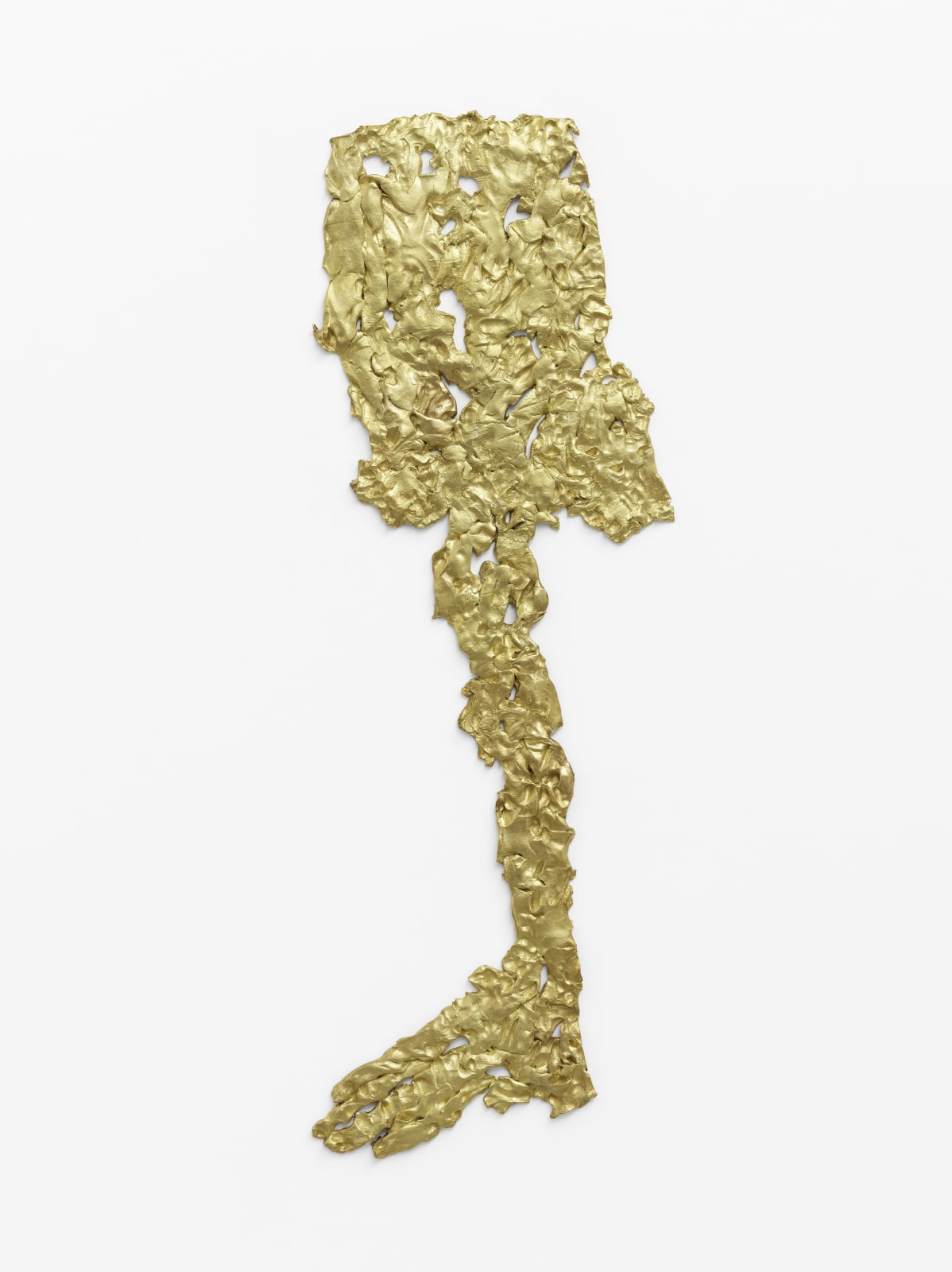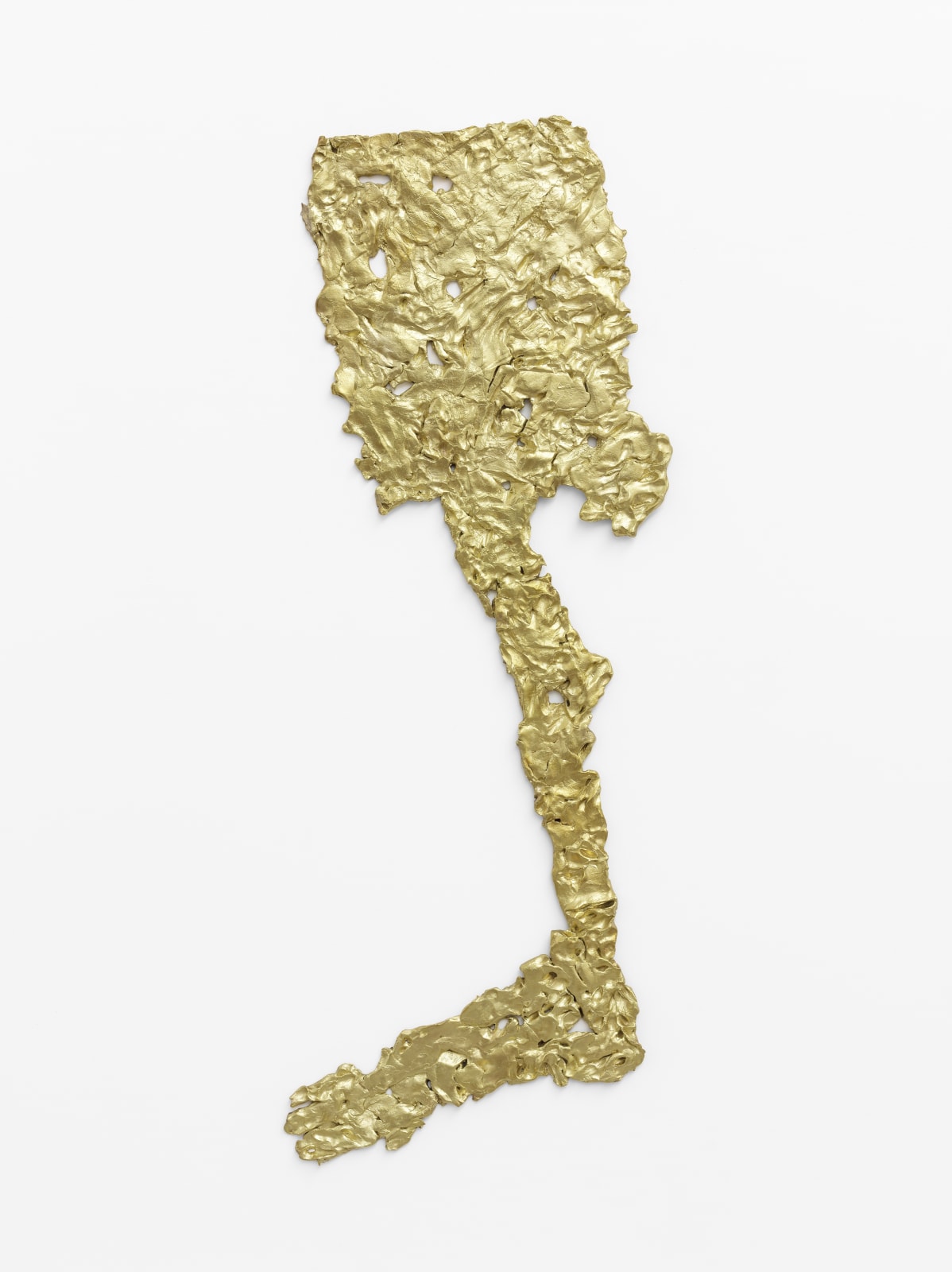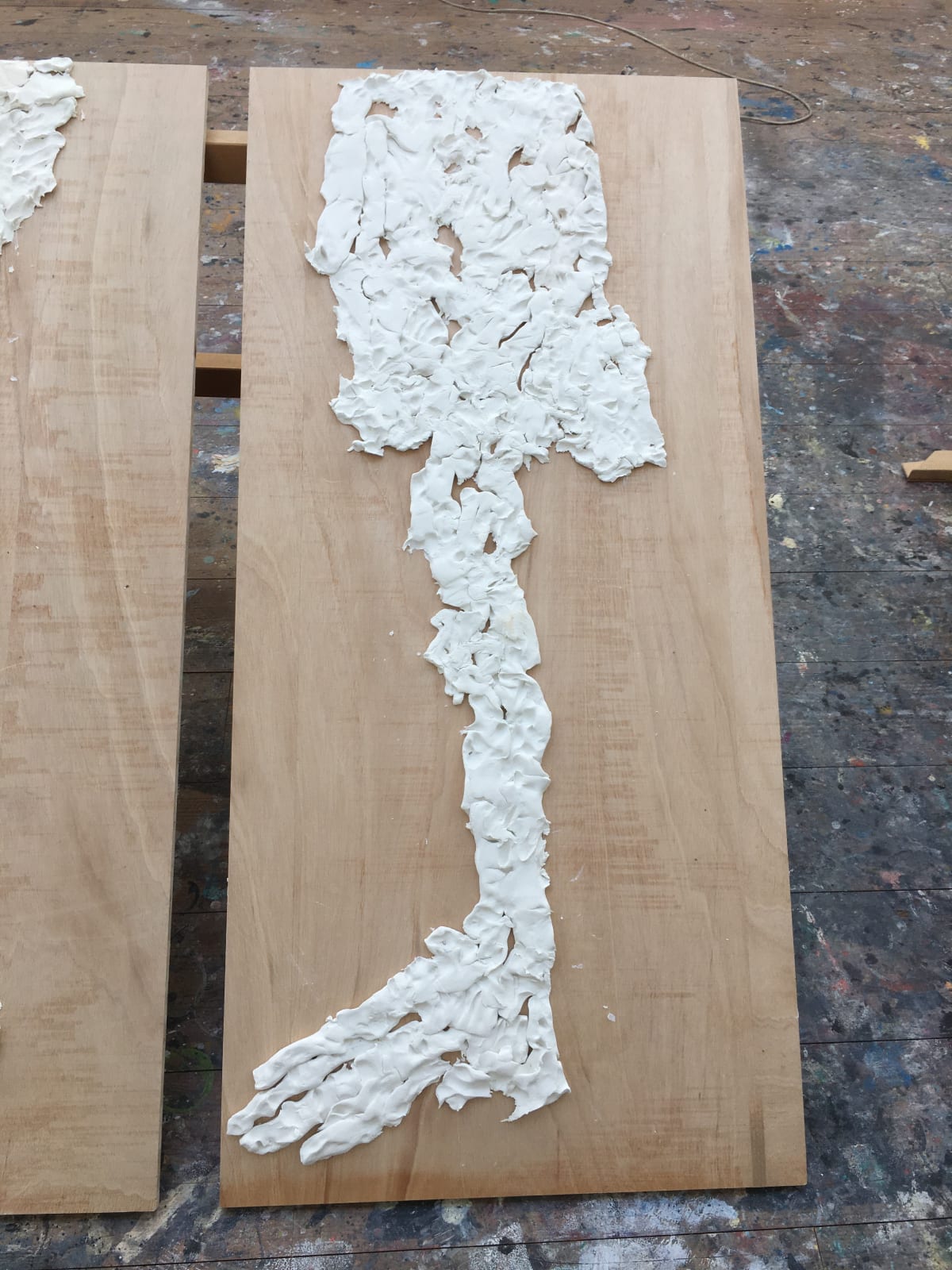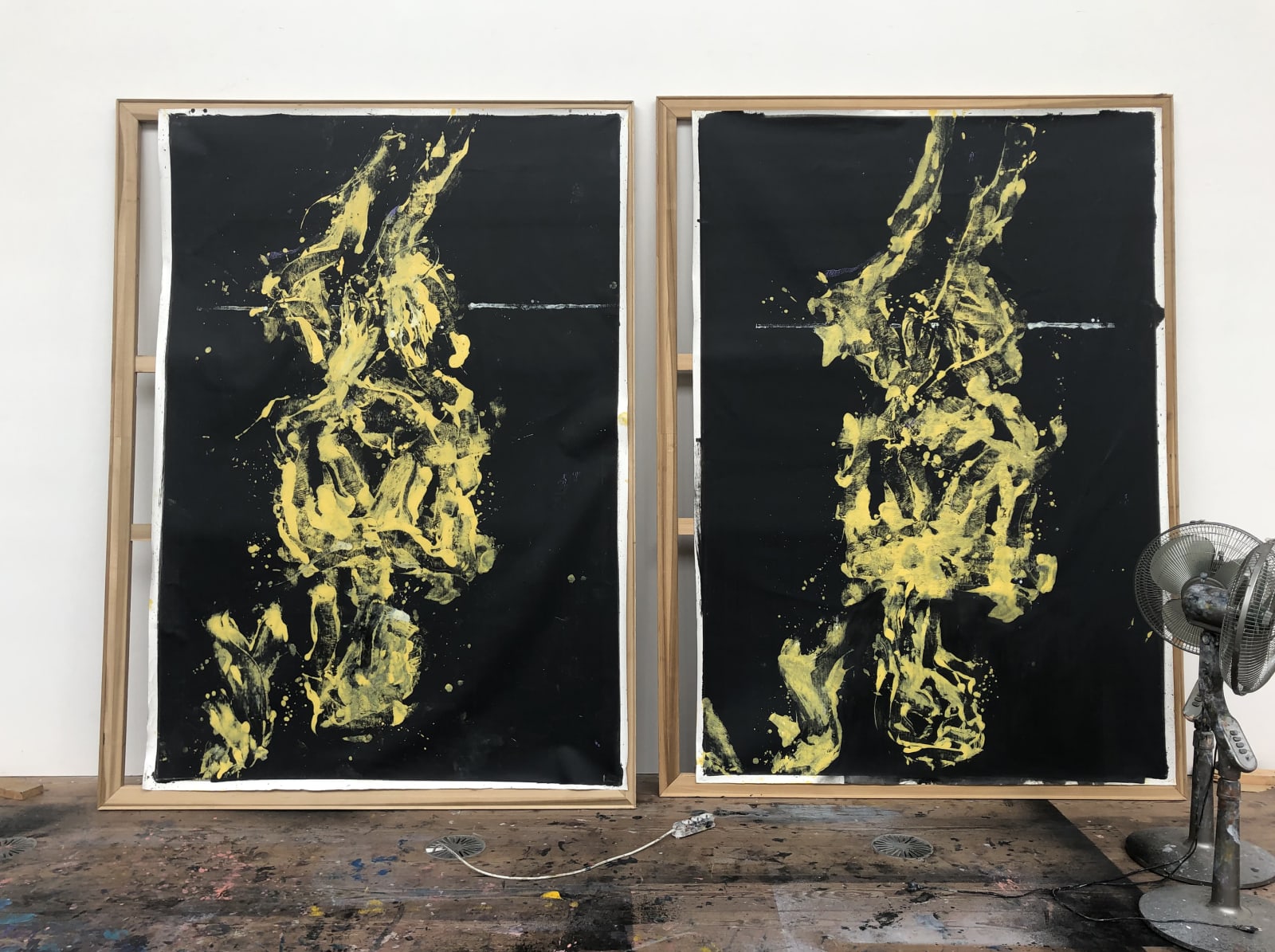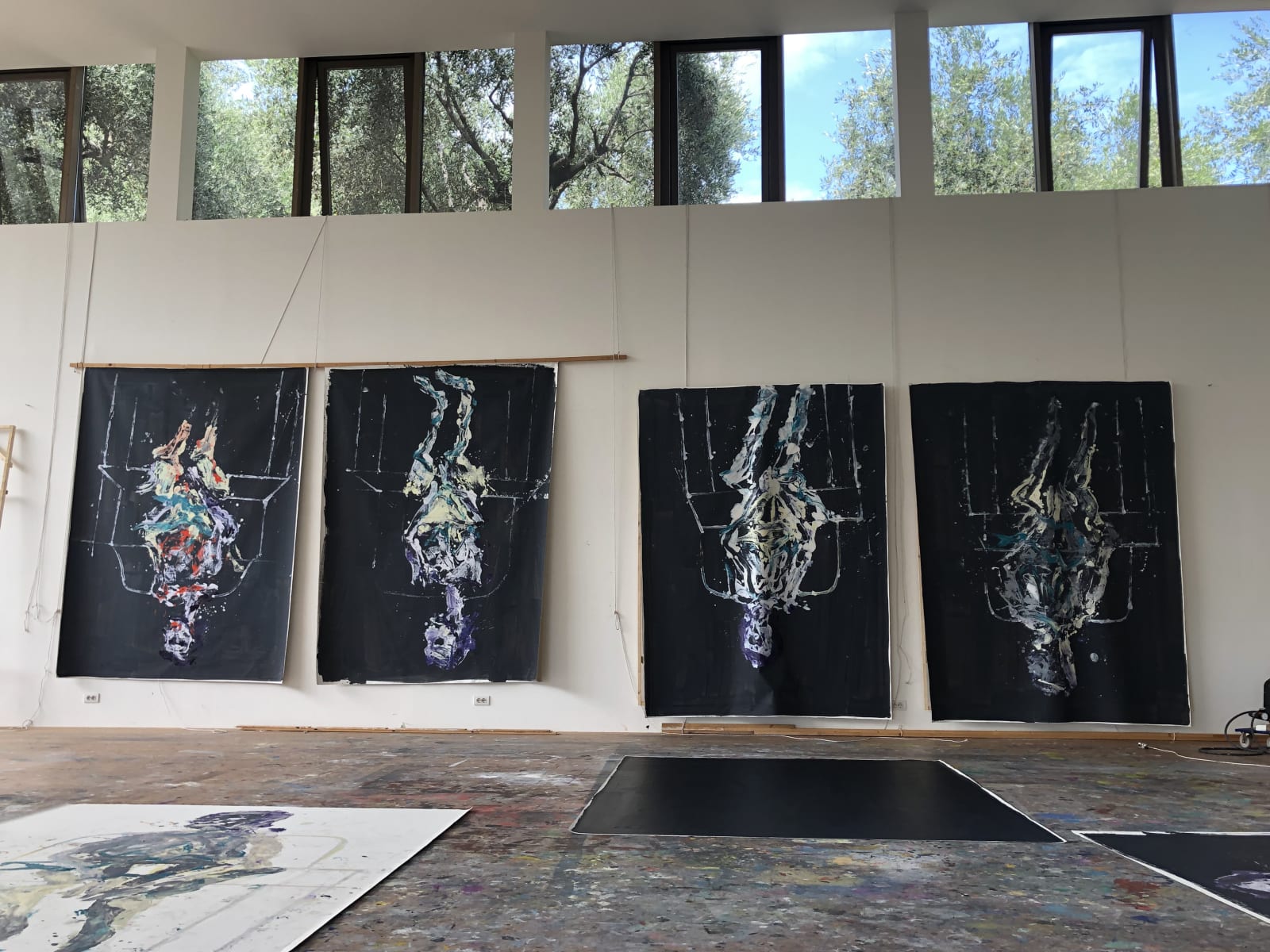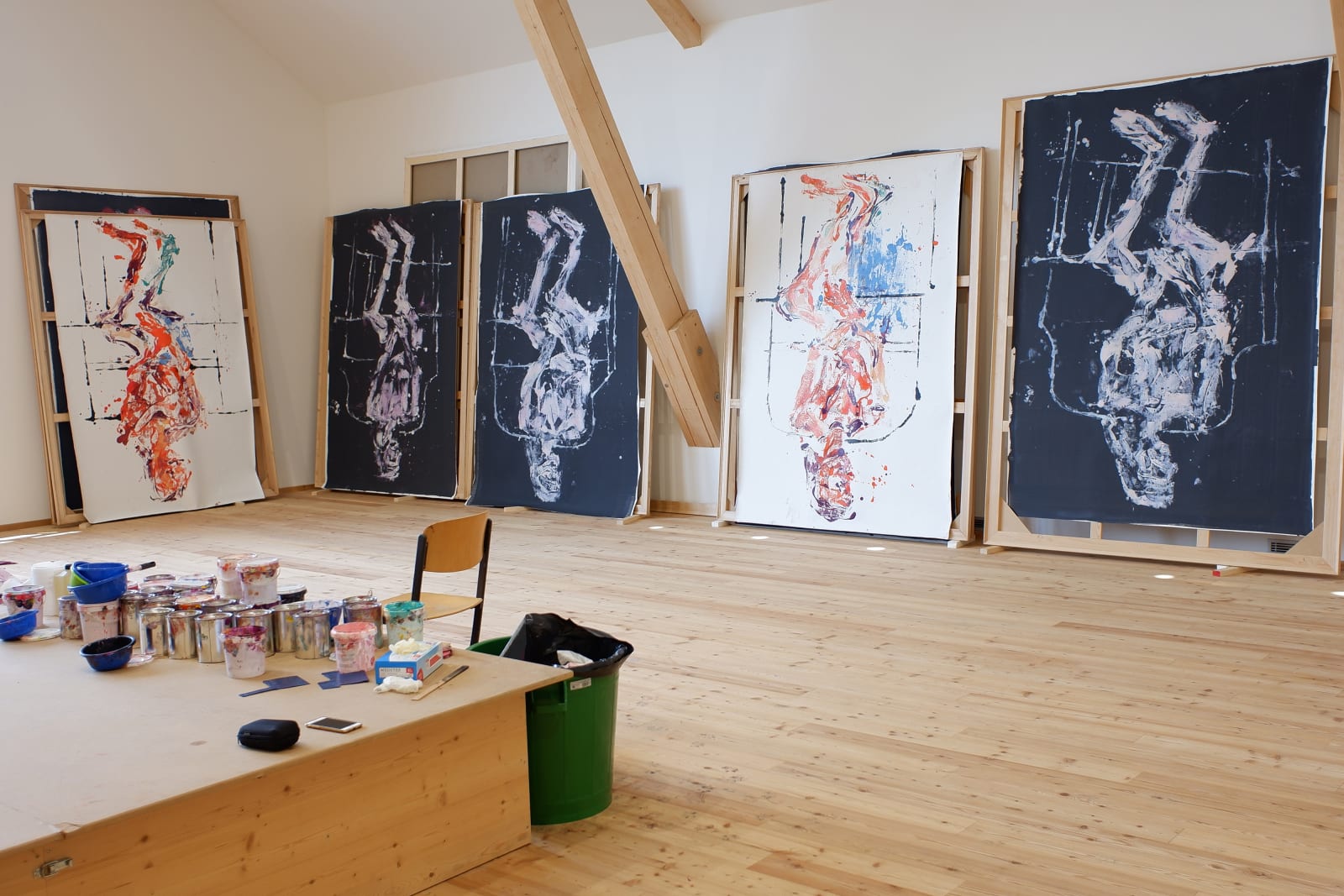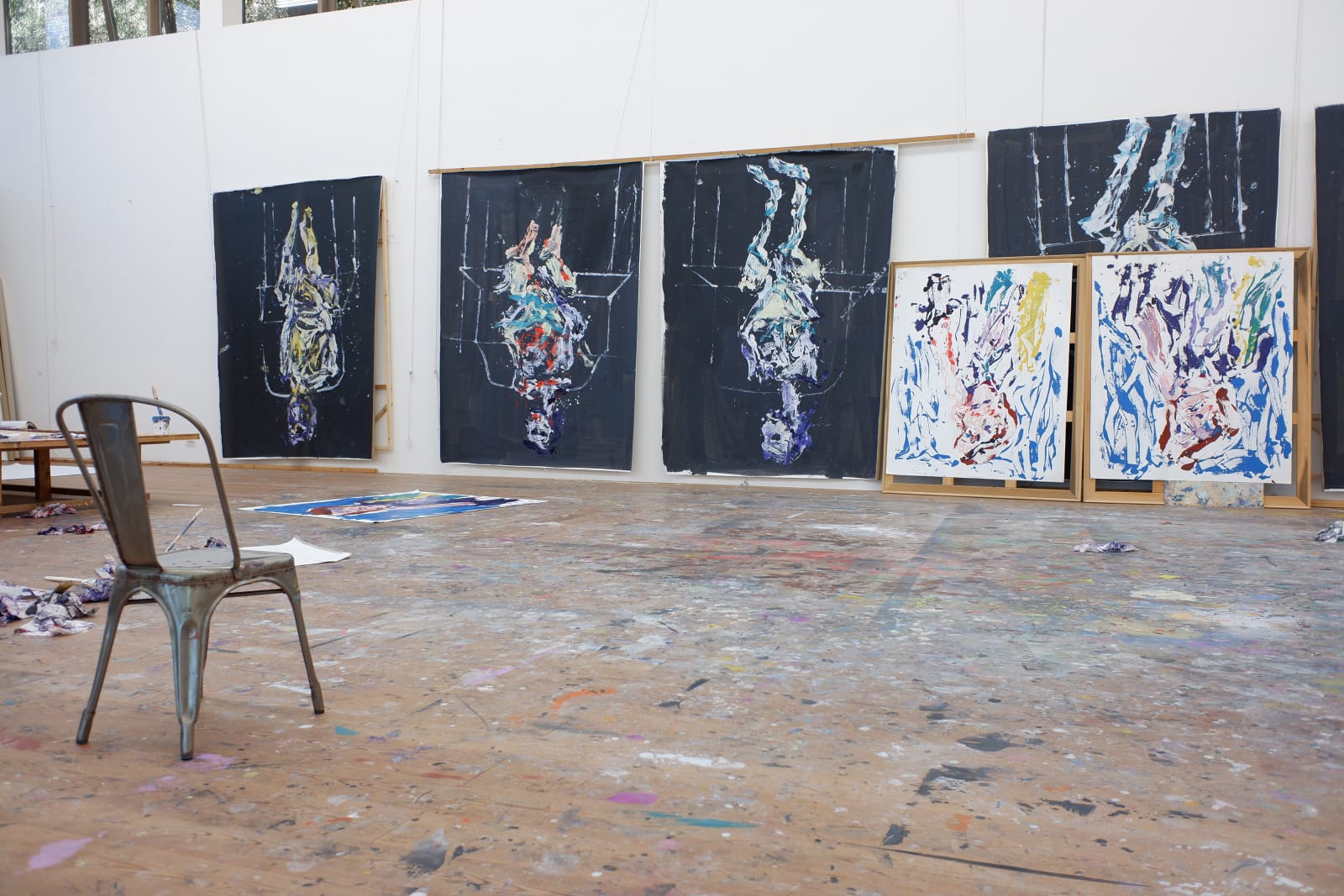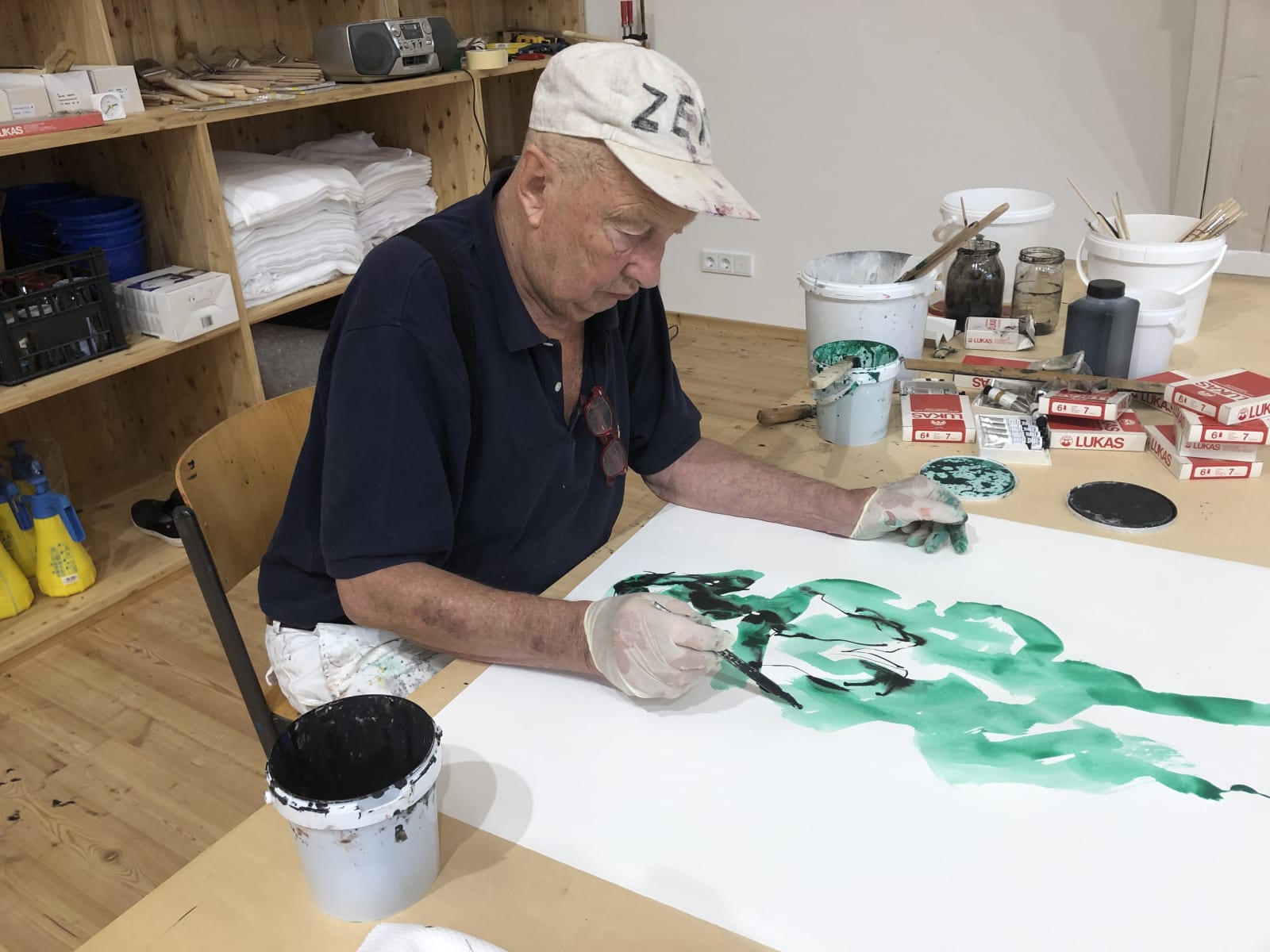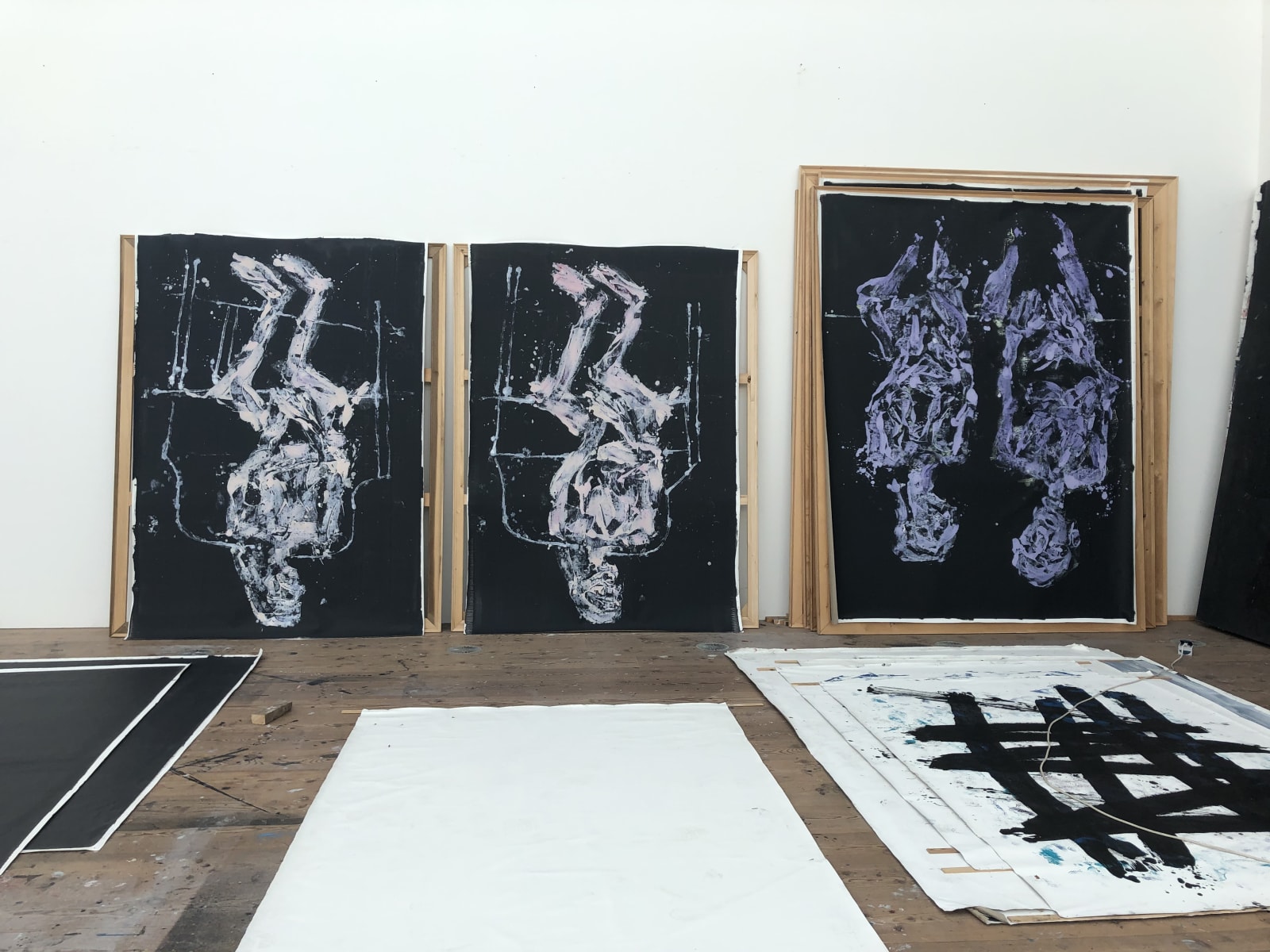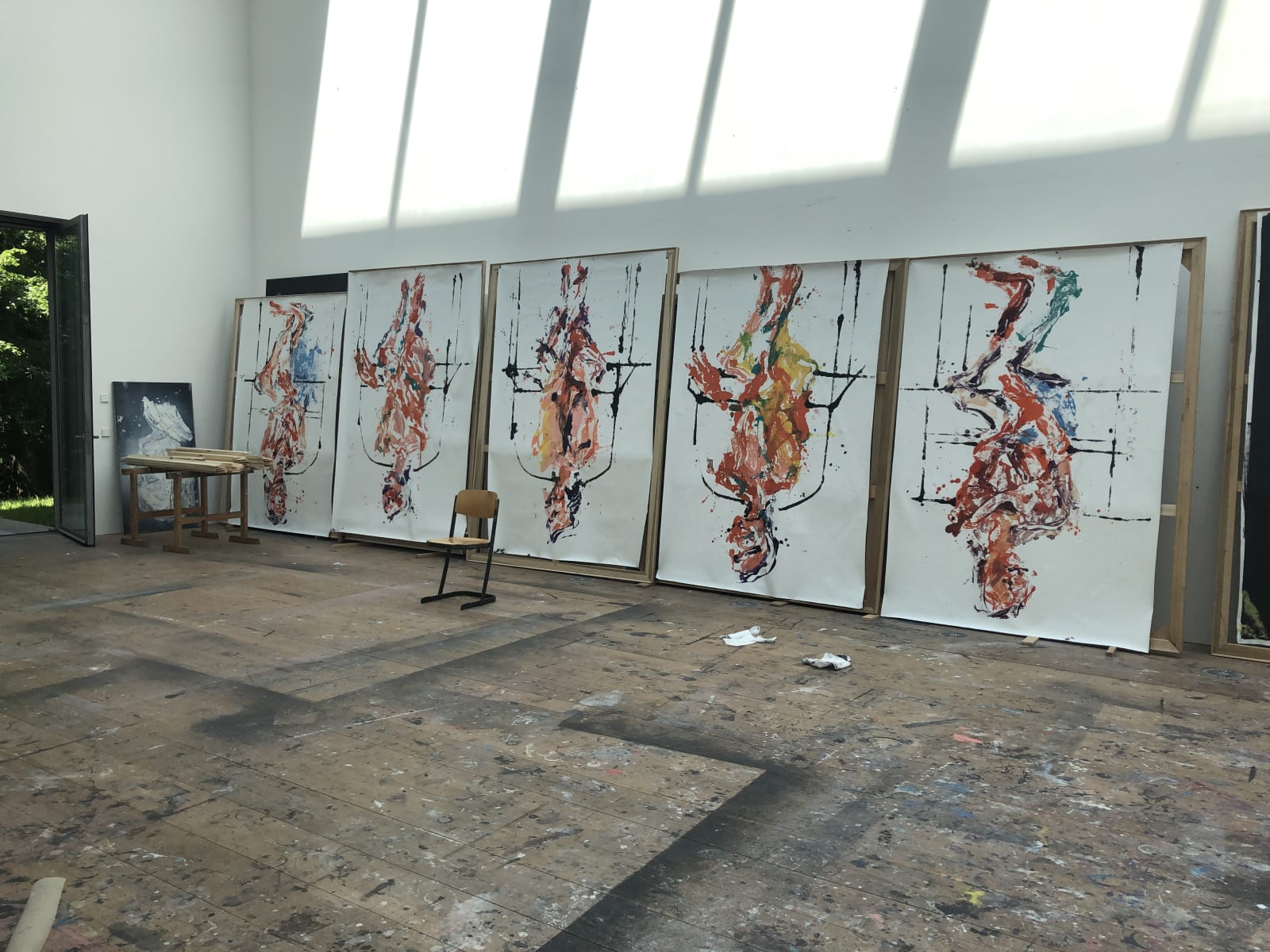On view at our Salzburg Gallery and as an Online Viewing Experience
Georg Baselitz’s new series of works comprises portraits of his wife Elke, whose image has occupied a prominent position in the development of his practice for over 50 years. Created in his new studio in Austria the works reveal Baselitz’s ongoing conceptual exploration of his personal style, as well as subtle art-historical references, such as allusions to German Expressionism, French Art Informel and the freedom of American abstract painting. Baselitz intensifies the intimacy and sensuousness of his motif in the heightened abstraction he achieves through his technique. The works were created through the transfer of colour, thereby evoking associations with Andy Warhol’s series of Rorschach paintings and Blotted Line Drawings, as well as with Roy Lichtenstein’s frozen Brushstrokes. He introduces an element of chance into his compositions and offers a reflection on the meaning of painting itself.
In fact, in everything I do, I apply the principles of disharmony, of imbalance, of destruction. — Georg Baselitz
The new series shows Elke enthroned on a stage-like construction against an unusually neutral background. Her figure stands out, pastose and multipartite, evoking existentialist connotations through her solitary suspension in the undefined space. Her physical presence is presented to the viewer in a variety of colourations; sometimes polychromatic on a white surface, sometimes golden yellow on a dark canvas. As early as the 1960s, during his visits to Paris, Baselitz was fascinated by French Informel. The material aesthetic of these artists has continued to influence his practice ever since, which is particularly evident in this new series of works.
In Paris, he had discovered the paintings of Jean Fautrier, Jean Dubuffet, Eugène Leroy, and Wols, works with meanings imbued with an existentialism whose presuppositions he shared: those of a philosophy that unconditionally favoured existence over essence. — Didier Ottinger
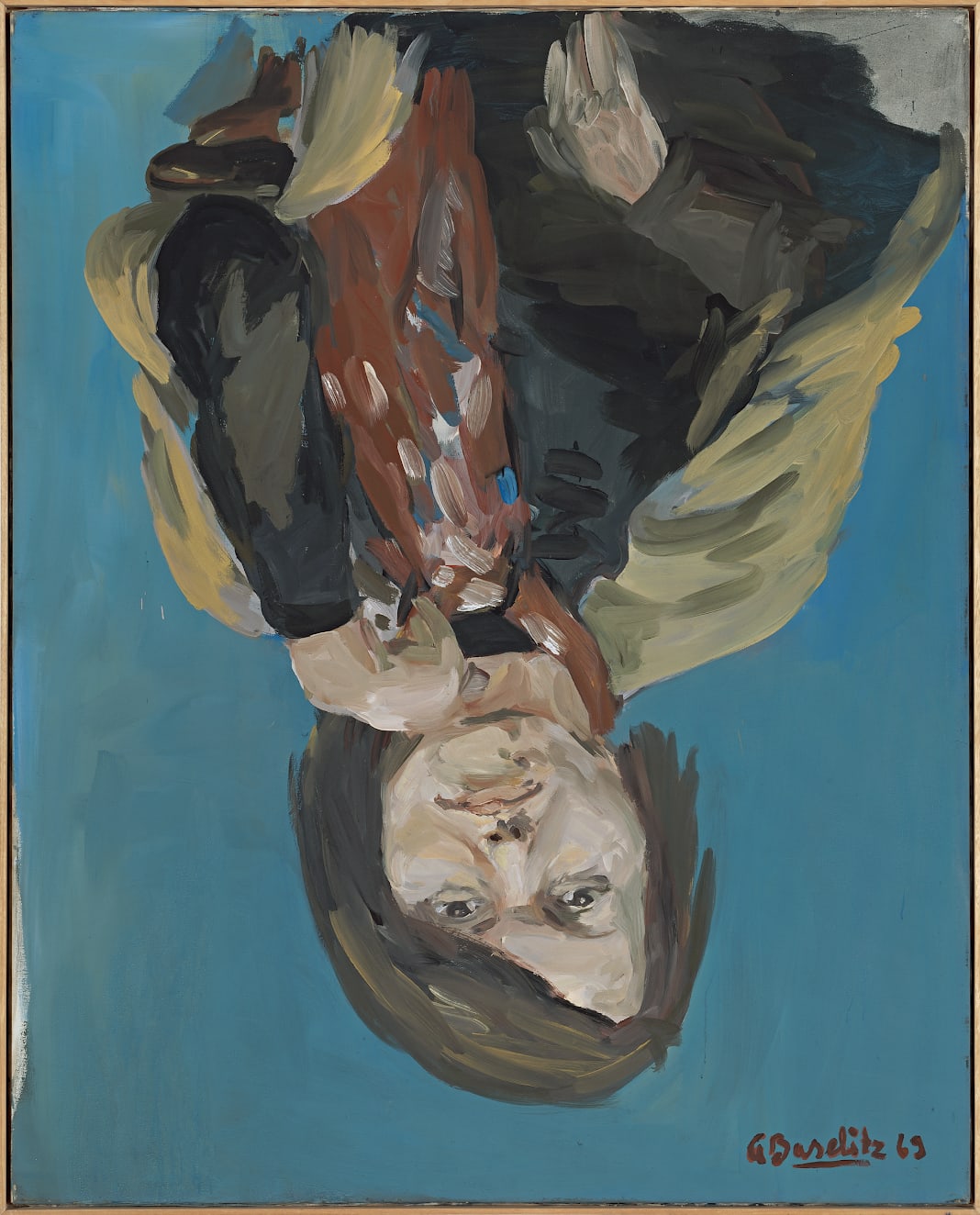
Elke’s image has occupied a prominent position in the development of Georg Baselitz’s practice. The familiarity of the subject allowed him to freely experiment, which resulted in completely new images and finally the inversion of the motif.
In order to neutralise the harmony bound to seep into the representation of a being so close to him, Baselitz had to invent a new prophylaxis. A seemingly simple gesture, he opted for the iconographic confusion produced by turning his paintings upside down. In 1969, he painted his first portrait of Elke. — Didier Ottinger
In addition to the portraits, the exhibition presents a series of fire-gilded bronze feet, a subject which is another constant in the canon of Baselitz’s motifs. The titles of the works give hints towards artists Baselitz greatly admires, such as Willem de Kooning or Lucio Fontana. For Baselitz, feet, as signifying direct contact with the earth, also symbolise a connection with his historical roots.
I deliberately cultivated that way of working on the floor. Later, I turned it into a philosophy, which states that my contact does not reach upward in the heavens. In Christian Europe that is the only contact. People are frightened of the downward contact – with Hell. My contact goes downward. I’m a north-of-the-Alps man, not to say a Teuton. — Georg Baselitz

I have always struggled with the fact that something hinders me in my paintings. What has always hindered me – and that has now improved significantly – is the so-called ‘existential’. The fact that there is something within me that occupies me and that I cannot eliminate from the pictures. I've been trying to get out of this for a long time. 60 years now. And for the last 20 years, I must say, I've been quite successful. Eventually, it all worked out. — Georg Baselitz
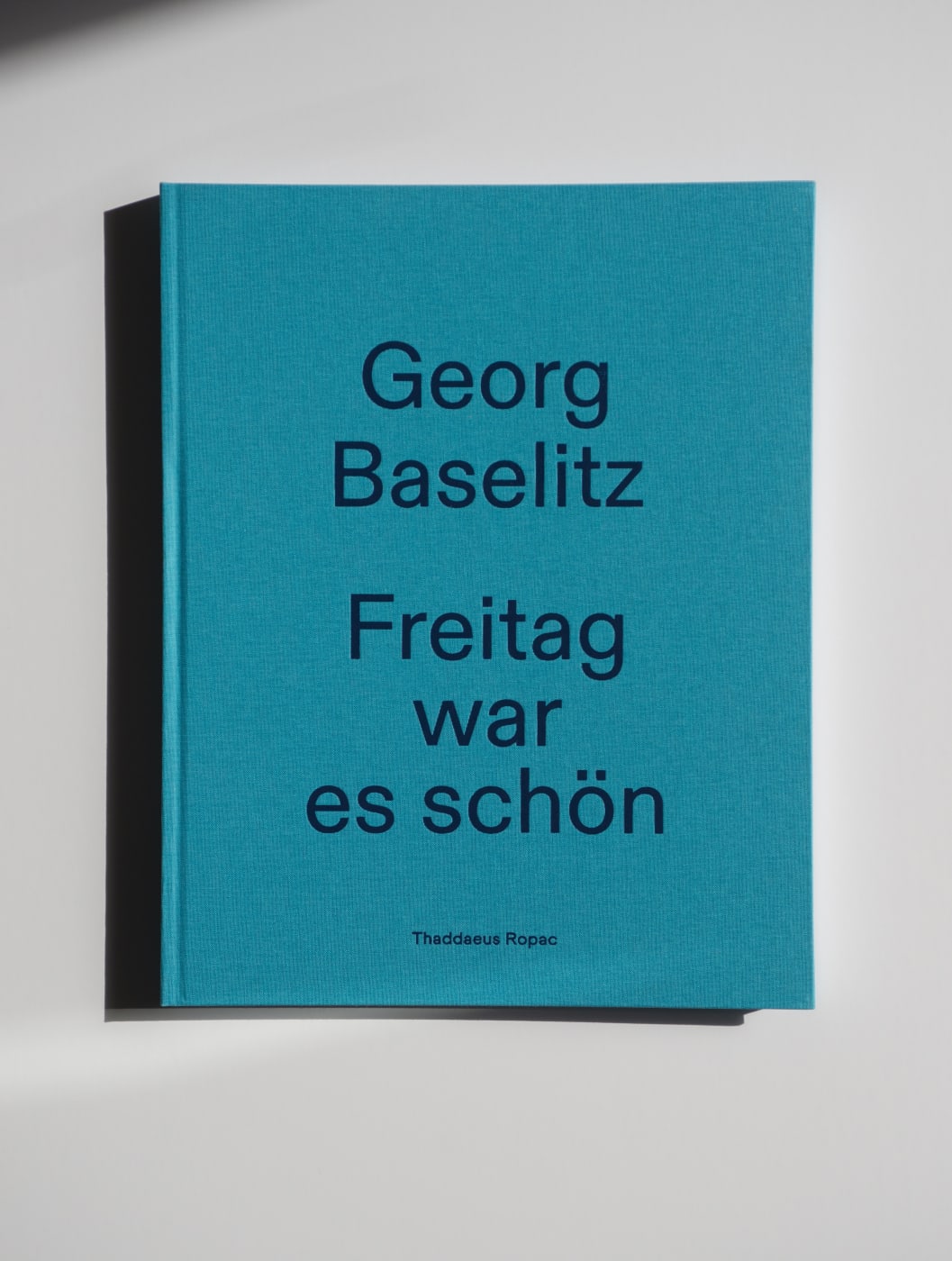
The exhibition will be accompanied by a fully illustrated catalogue with an essay by Didier Ottinger, Deputy Director of the Musée National d’Art Moderne, Centre Pompidou, Paris and curator of the acclaimed monographic Francis Bacon show in 2019.





